Battle scene
Oil on canvas, cm 90 x 117.5
With frame cm 112 x 139,5
Francesco Monti, better known as Il Brescianino or Il Brescianino delle battaglie, was born in Brescia in 1646. Pellegrino Antonio Orlandi (1704), who was his first biographer, informs that he had as teacher the painter from Lucca, Pietro Ricchi. All the following literature has accepted the news, assuming mostly that the event took place during the Venetian stay of Ricchi, placed in the third quarter of the seventeenth century. The total absence of data on Monti’s youth activity, however, makes it almost impossible to assess the importance of Ricchi’s style in his training and, on the other hand, it is not easy to identify derivations from the master in subsequent production. Monti was also a pupil of Jacques Courtois, known as the Borgognone, according to Orlandi and a letter sent to Monti by his friend Carlo Giuseppe Fontana in 1694, mentioned in the monograph dedicated to the artist from Brescia by Arisi (1975, p. 34). The Borgognone’s teaching, although its chronological and geographical circumstances are unknown, had to play a decisive role in the improvement of Monti as a painter of battles. The difficulties of outlining a certain catalogue of his work, however, in the absence of a sufficient quantity of documented paintings, are also reflected on the definition of this artistic relationship. During the training phase the artist made numerous trips that took him to various locations of the Peninsula: particularly significant was that in Naples, where he had the opportunity to observe first-hand the work of Salvator Rosa, which strongly influenced his entire pictorial production. Having reached full artistic maturity, Brescianino entered the service of the Farnese in 1681: There are numerous works, mainly of war subject, made by the artist for the centers of Parma and Piacenza in the last twenty years of the seventeenth century. Particularly appreciated at the Farnese court, the artist was able to build a prolific workshop in Parma, where they formed figures such as Giovanni Canti, Ilario Spolverini, Angiolo Everardi, known as the Fiamminghino, and Lorenzo Comendich. Monti’s paintings are characterized by wide spaces «that get lost in the smoke and dust», by the tangle of armed men in the foreground with dismounted knights and horses who are wailing in the last moment of life. In addition to the battles, which are certainly the most substantial and interesting segment of his production, the painter executed paintings on religious and marine themes in which we see the influence of Pieter Mulier, called The Storm, with whom he had a deep friendship. After having started an active and well-established workshop, the artist, who was particularly successful at the Farnese court, died, probably in Piacenza, in 1703 (Sestieri, 1999, p. 206).
The painting in question depicts a clash between knights with firearms. The bright armor of the fighters stands out against a cloud-laden sky, in front of the city skyline and an impressive natural landscape. The scene is shot in the foreground, following a typical subterfuge of the battles painted by Francesco Monti, so that the viewer feels like a direct witness to the scene he is witnessing. This is one of the key features of the production of Brescianino, to which are added a great chromatic vivacity, the play of various perspectives and an attentive stage direction.






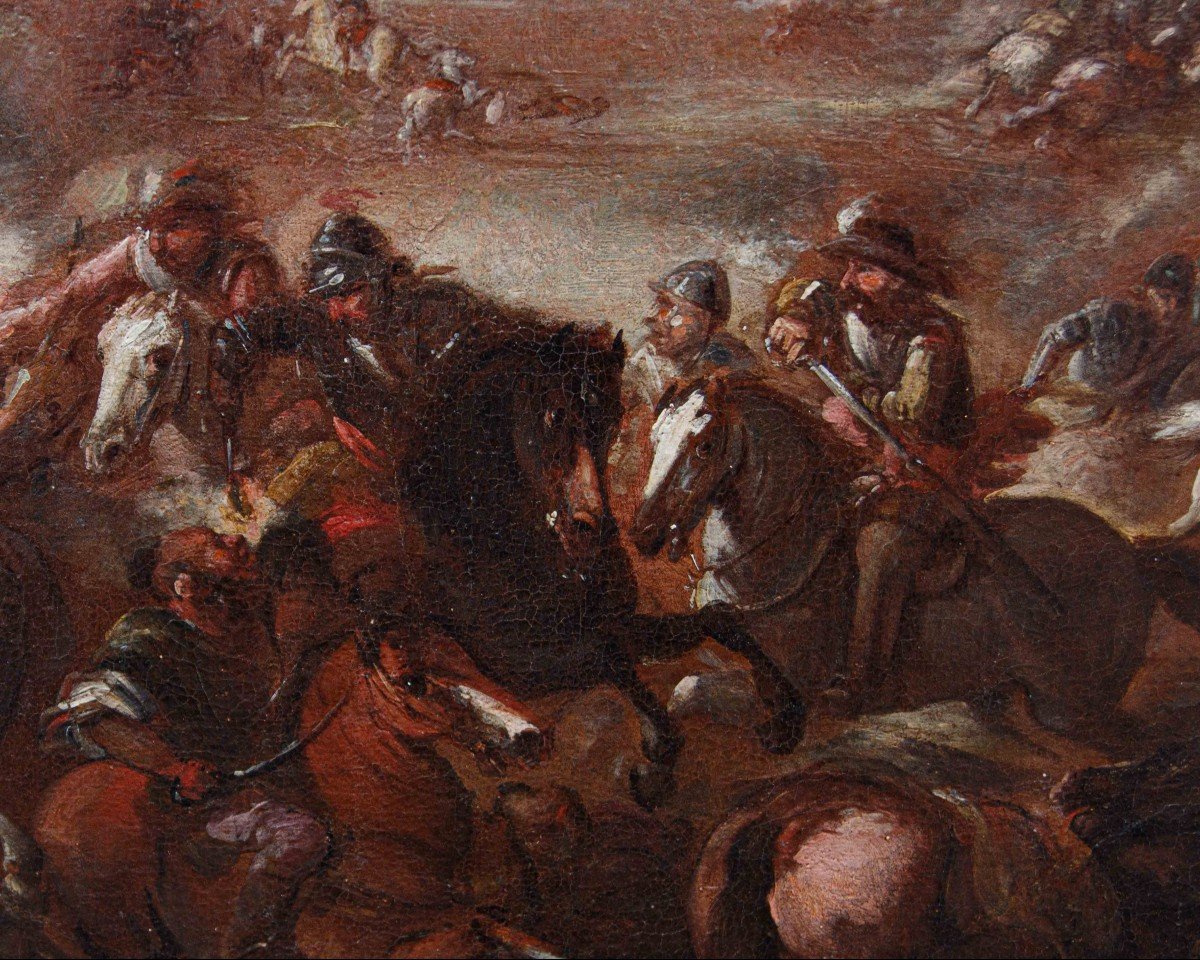























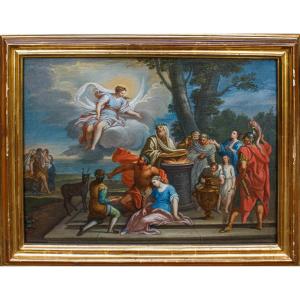



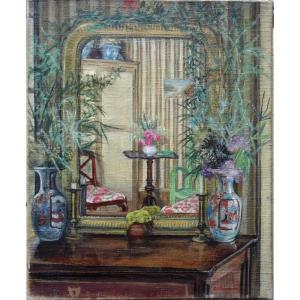
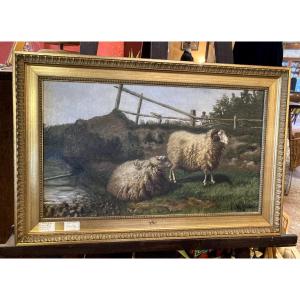
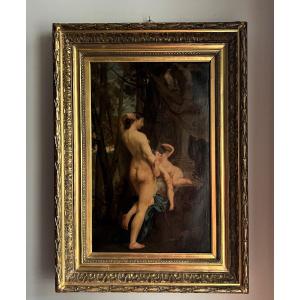





 Le Magazine de PROANTIC
Le Magazine de PROANTIC TRÉSORS Magazine
TRÉSORS Magazine Rivista Artiquariato
Rivista Artiquariato